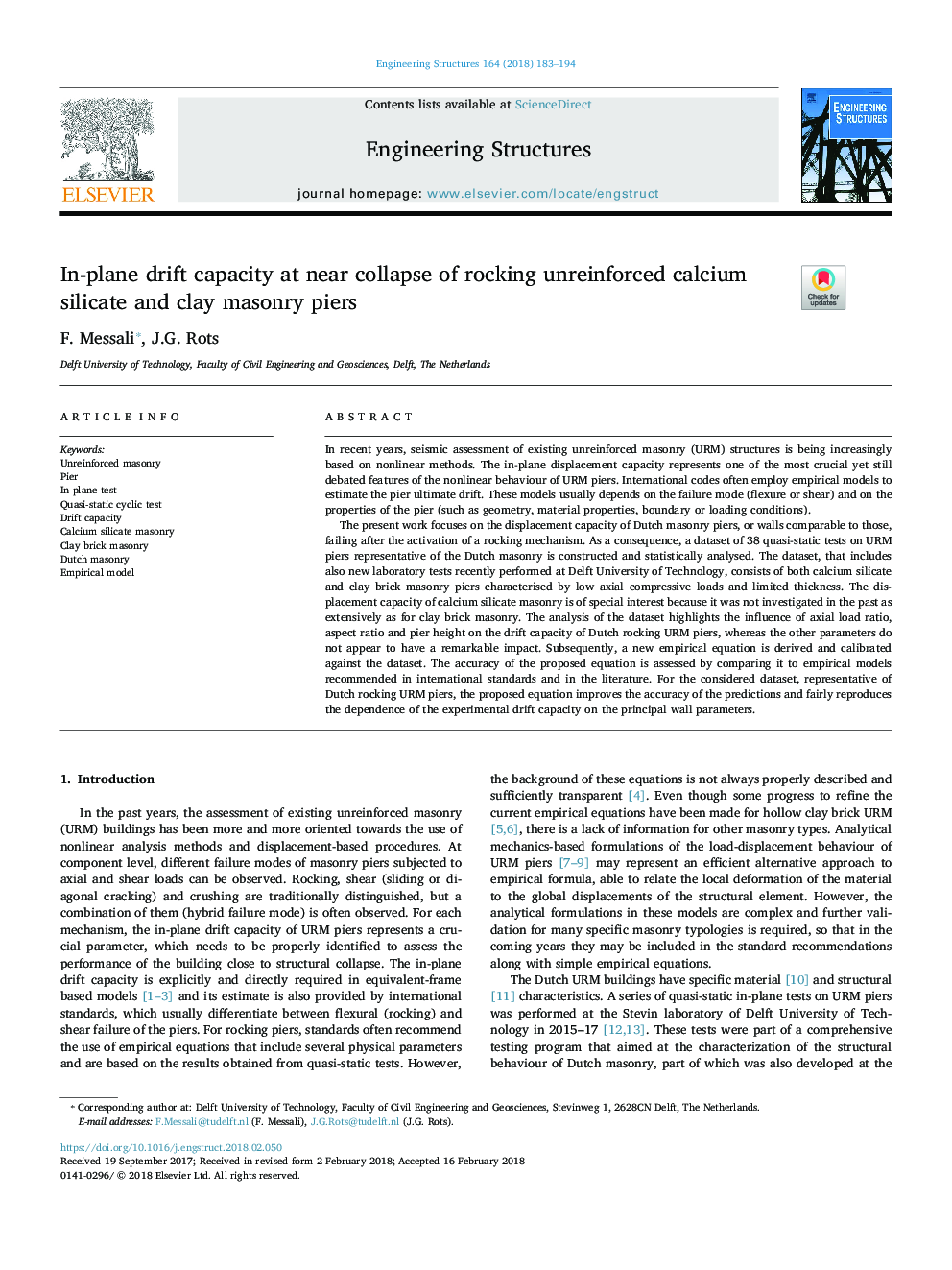| Article ID | Journal | Published Year | Pages | File Type |
|---|---|---|---|---|
| 6737753 | Engineering Structures | 2018 | 12 Pages |
Abstract
The present work focuses on the displacement capacity of Dutch masonry piers, or walls comparable to those, failing after the activation of a rocking mechanism. As a consequence, a dataset of 38 quasi-static tests on URM piers representative of the Dutch masonry is constructed and statistically analysed. The dataset, that includes also new laboratory tests recently performed at Delft University of Technology, consists of both calcium silicate and clay brick masonry piers characterised by low axial compressive loads and limited thickness. The displacement capacity of calcium silicate masonry is of special interest because it was not investigated in the past as extensively as for clay brick masonry. The analysis of the dataset highlights the influence of axial load ratio, aspect ratio and pier height on the drift capacity of Dutch rocking URM piers, whereas the other parameters do not appear to have a remarkable impact. Subsequently, a new empirical equation is derived and calibrated against the dataset. The accuracy of the proposed equation is assessed by comparing it to empirical models recommended in international standards and in the literature. For the considered dataset, representative of Dutch rocking URM piers, the proposed equation improves the accuracy of the predictions and fairly reproduces the dependence of the experimental drift capacity on the principal wall parameters.
Keywords
Related Topics
Physical Sciences and Engineering
Earth and Planetary Sciences
Geotechnical Engineering and Engineering Geology
Authors
F. Messali, J.G. Rots,
